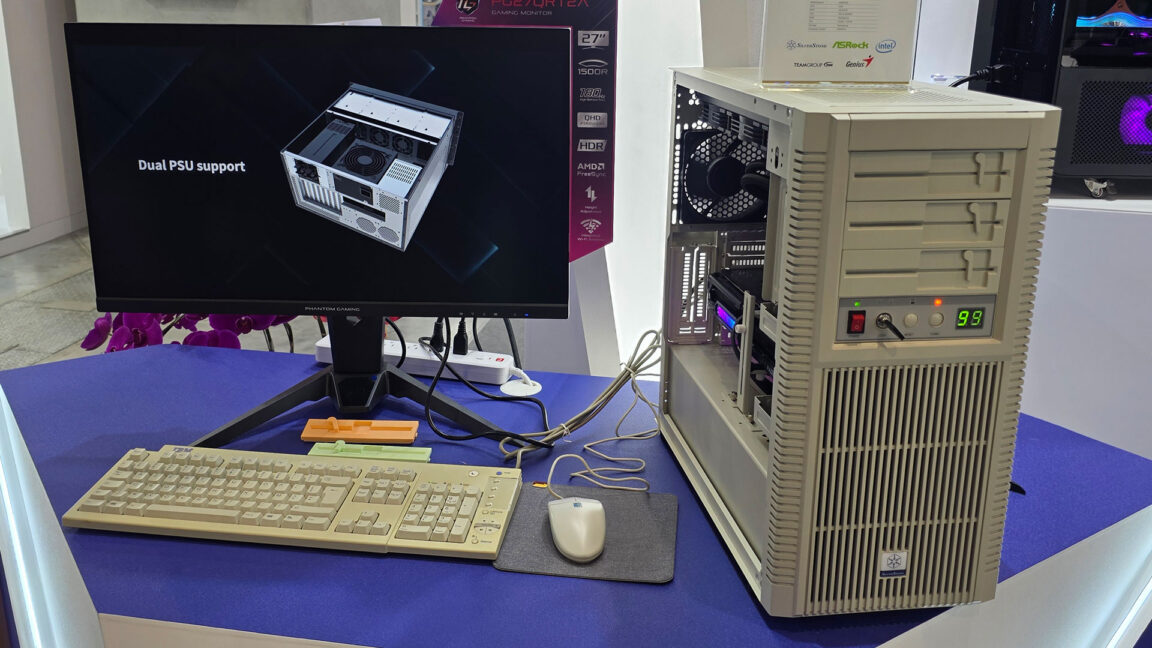Researchers develop a new set of genetic tools designed to treat brain diseases
Scientists say they’ve put together a new kind of molecular toolkit that could eventually be used to treat a variety of brain diseases, possibly including epilepsy, sleep disorders and Huntington’s disease. The kit currently contains more than 1,000 tools of a type known as enhancer AAV vectors, with AAV standing for “adeno-associated virus.” A consortium that included researchers from Seattle’s Allen Institute for Brain Science and the University of Washington combined harmless adeno-associated viruses with snippets of engineered DNA to create a gene-therapy package that could target specific neurons in the brain while having no effect on other cells. Researchers… Read More


Scientists say they’ve put together a new kind of molecular toolkit that could eventually be used to treat a variety of brain diseases, possibly including epilepsy, sleep disorders and Huntington’s disease.
The kit currently contains more than 1,000 tools of a type known as enhancer AAV vectors, with AAV standing for “adeno-associated virus.” A consortium that included researchers from Seattle’s Allen Institute for Brain Science and the University of Washington combined harmless adeno-associated viruses with snippets of engineered DNA to create a gene-therapy package that could target specific neurons in the brain while having no effect on other cells.
Researchers laid out their findings in a set of eight studies published today in the Cell Press family of journals. The work is part of a project called the Armamentarium for Precision Brain Cell Access, funded through the National Institutes of Health’s BRAIN Initiative.
“Honing in on the right cells — in the right way and at the right time — is the future of precision brain medicine,” John Ngai, director of the BRAIN Initiative, said in a news release. “These tools move us closer to that future, while also expanding what we know about the brain’s cells and circuits today.”
Jonathan Ting, one of the study authors and an associate investigator at the Allen Institute, noted that enhancer AAV vectors have been used before to target cells in the brain and other tissues such as the heart and liver. In March, for example, a team led by researchers at the Allen Institute and Seattle Children’s Research Institute described an AAV vector that shows promise for treating Dravet syndrome, a genetic disorder that causes a severe form of epilepsy.
“What is unique about this new collection is the immense scale of new cell-type targeting tools,” Ting told GeekWire in an email. “Rather than a trickle of tools for the purpose of advancing understanding of the brain, now we have what amounts to a tidal wave of new tools to access and perturb cell function across a remarkable diversity of cell types in multiple brain regions and the spinal cord.”
Different enhancer AAV vectors were engineered to target different cell types in different regions of the central nervous system, including the spinal cord, the cortex and the striatum. That specificity could open new avenues for targeted treatment. For example, dysfunction in the striatum is linked to movement disorders such as Parkinson’s and Huntington’s disease — and may also play a role in drug addiction.
“There is an overall principle that diseases usually arise from flaws in specific cell types, not the whole organism. For example, epilepsy is a nervous system disease that is actually a disease of specific neurons in the nervous system,” said study author Bosiljka Tasic, director of molecular genetics at the Allen Institute. “If you want to fix those neurons, you can try to access only those neurons. The key is this cell-type-specific access for understanding and perturbing brain cells to figure out their function, and for correcting and fixing the defective parts of these cells.”

One study documented how one of the molecular tools targeted a rare type of cell that regulates sleep. “It is reasonable to speculate that this tool and various derivative tools could be used to better understand the central control of sleep, or to intervene in cases of sleep disturbance disorders in humans,” Ting told GeekWire. “The exact applications remain to be determined.”
The experiments described in the studies were conducted on mice, rats and macaque monkeys, plus tissue samples from those species as well as from marmosets and humans. One of the studies used machine-learning models to identify the most promising enhancer for targeting a specific region of the rhesus monkey brain. That region, known as the dorsolateral prefrontal cortex, is associated in humans with working memory and impulse control.
In the short term, the new toolkit should help researchers use animal models to gain new insights into the workings of the different types of cells in the central nervous system, and learn how to switch specific functions of those cells on or off. Gordon Fishell, a professor of neurobiology at Harvard and the Broad Institute, said that gaining access to a variety of cell types will be a “game-changer in understanding the brain and developing therapies for human neurological disorders.”
It may take a while for clinical applications to emerge. “The time horizon is unclear for how fast any of these novel approaches can advance to the clinic, but we expect to see advances along these lines relatively quickly, as in the next two to three years,” Ting said. “This may take the form of developing a ‘Version 2.0’ approach to a failed Version 1.0 strategy that didn’t target cell types and yielded some disappointing outcomes.”
Ting and his colleagues expect to improve the safety and efficacy of their tools as they become more familiar with the toolkit. “We expect this scenario will play out for many diverse CNS [central nervous system] disorders into the future,” he said.
In addition to the Allen Institute for Brain Science and the University of Washington, the institutions collaborating in the studies published today include the Broad Institute, Harvard Medical School, Duke University, the University of California at Irvine, the University of California at Berkeley, the University of Pittsburgh, Carnegie Mellon University, Stanford University and Addgene. The tools and data in the studies are freely available on the Allen Institute’s Genetic Tools Atlas and through Addgene.
Here are the papers published today related to the BRAIN Armamentarium:
- Neuron: “Exploring brain circuits, one cell type — or more — at a time”
- Cell: “A suite of enhancer AAVs and transgenic mouse lines for genetic access to cortical cell types.”
- Cell Genomics: “Evaluating methods for the prediction of cell-type-specific enhancers in the mammalian cortex.”
- Cell Reports: “Enhancer AAVs for targeting spinal motor neurons and descending motor pathways in rodents and macaque.”
- Cell Reports Methods: “An AAV capsid proposed as microglia-targeting directs genetic expression in forebrain excitatory neurons.”
- Neuron: “An enhancer-AAV toolbox to target and manipulate distinct interneuron subtypes.”
- Neuron: “Enhancer AAV toolbox for accessing and perturbing striatal cell types and circuits.”
- Neuron: “Specific targeting of brain endothelial cells using enhancer AAV vectors.”
- Neuron: “Machine learning identification of enhancers in the rhesus macaque genome.”
















































































































































































![[The AI Show Episode 148]: Microsoft’s Quiet AI Layoffs, US Copyright Office’s Bombshell AI Guidance, 2025 State of Marketing AI Report, and OpenAI Codex](https://www.marketingaiinstitute.com/hubfs/ep%20148%20cover%20%281%29.png)


![[The AI Show Episode 146]: Rise of “AI-First” Companies, AI Job Disruption, GPT-4o Update Gets Rolled Back, How Big Consulting Firms Use AI, and Meta AI App](https://www.marketingaiinstitute.com/hubfs/ep%20146%20cover.png)








































































































































































































































.jpg?#)








.jpg?width=1920&height=1920&fit=bounds&quality=70&format=jpg&auto=webp#)



















_pichetw_Alamy.jpg?width=1280&auto=webp&quality=80&disable=upscale#)




















































































































![Apple Leads Global Wireless Earbuds Market in Q1 2025 [Chart]](https://www.iclarified.com/images/news/97394/97394/97394-640.jpg)

![OpenAI Acquires Jony Ive's 'io' to Build Next-Gen AI Devices [Video]](https://www.iclarified.com/images/news/97399/97399/97399-640.jpg)
![Apple Shares Teaser for 'Chief of War' Starring Jason Momoa [Video]](https://www.iclarified.com/images/news/97400/97400/97400-640.jpg)




































































